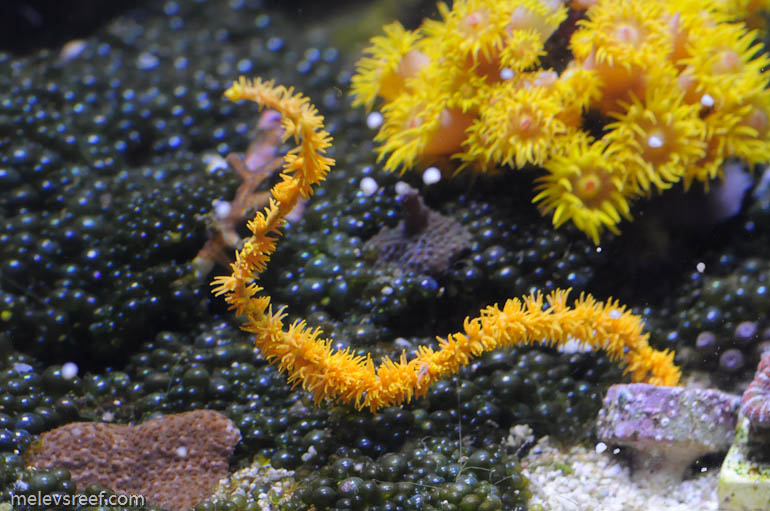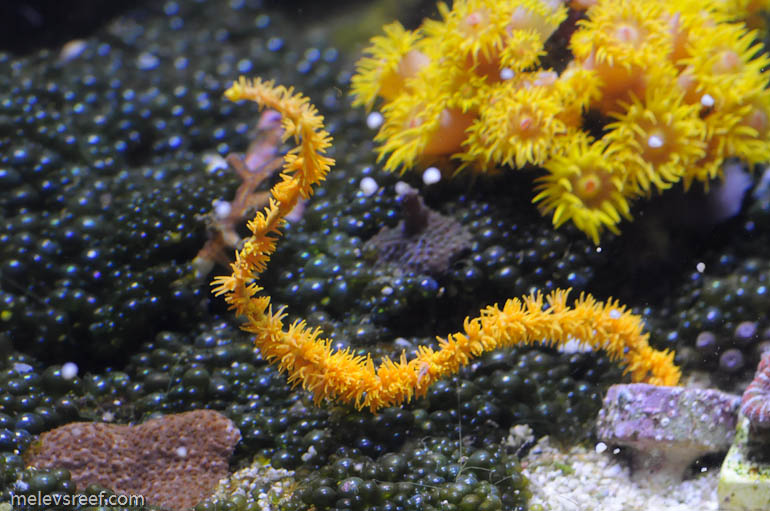Wire corals of the genus Cirrhipathes feature some of the most iconic growth forms of any coral found in the aquarium trade. In the past couple years coral farms have started Mariculturing several variations, and availability of wire corals in the aquarium trade has recently grown. Unfortunately little information is available within aquarium circles, and there is much confusion around this unique group of corals.
Many seem to assume that these corals are gorgonians (which is understandable based on external features) but wire corals are actually black corals and part of the subclass Hexacoralia rather than Octocoralia. Basically this means wire corals are more closely related to Acros and zoanthids than to gorgonians or soft corals. Who would have guessed?

There are 16 species within the Cirrhipathes genus (18 if you count Cirrhipathes ramosa, and Cirrhipathes desbonni which are not officially accepted species). Of those 16 only one, Cirrhipathes spiralis, is found with any regularity in the hobby. Cirrhipathes contorta might also be found on a rare occasion, but the bulk of imported maricultered specimens are Cirrhipathes spiralis which makes identification very easy.
Cirrhipathes spiralis comes in a wide range of different color combinations, although they are mostly found in the red to yellow range with an occasional blue/grey variation. Wire corals are more on the expensive side of maricultured corals especially compared to gorgonians (again, these are not gorgonians!), but 3-4 inch maricultered colonies can usually be found for around 60 dollars retail.

The majority of wire corals you will find in the trade are exclusively non-photosynthetic, but there might be a few cases in which Cirrhipathes do contain zooxanthellae (van Pesch, 1914 and Bo, 2011). Anecdotal evidence by hobbyists seem to support this notion, some even claiming an absolute need to supplement these corals with light. Whether this is an actual case of symbiosis or if it is rather case of zooxanthellae infection is debatable, but either way it is something to keep in mind if your coral isn’t looking too hot even with frequent feeding. The presence of zooxanthellae is not something that is exclusive to Cirrhipathes, and quite a few deep water black corals are now being reported to contain zooxanthellae.
Wire corals are carnivorous, and should be fed small meaty foods such as baby brine, rotifers, cyclop-eeze, fish eggs, and other zooplankton feeds. Some have even reported luck feeding pieces of mysis shrimp! Like most azoox it is always better to feed more often, but some report success (which includes growth) feeding only once a week. Whether in this particular case the person was dealing with a photosynthetic variation is not clear, and thus we’d recommend feeding your wire corals at least twice a week.

Cirrhipathes are extremely interesting animals, and are a great addition to any aquarium if you are willing to shoot some food their way a couple times a week. These are definitely not beginner corals, but should be a great choice for the experienced aquarist. Questions about whether these corals might be photosyntethic or not however, show us just how little we still know about these corals. If you have previously kept, or own a wire coral, what has your experience been? Feel free to leave your experiences in the comments below.



